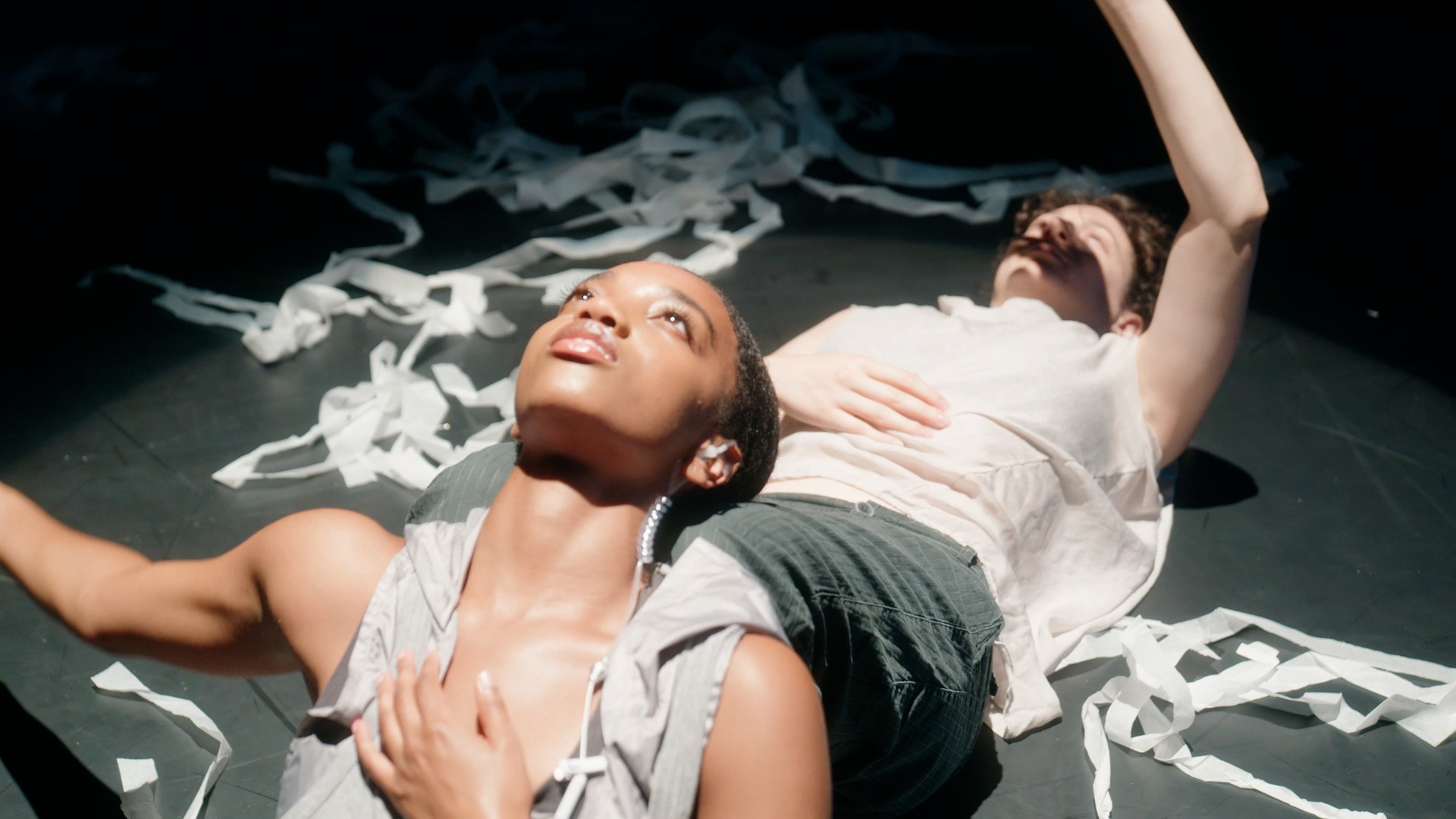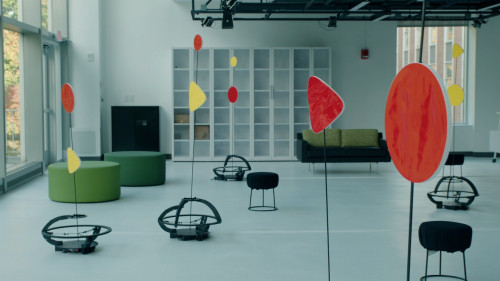How can a contemporary dance performance break free from traditional structures to welcome and entertain neurodiverse and neurotypical individuals? “Rhythm Bath” is a performance installation that immerses audiences in a 360-degree interactive environment, creating a space where people can be themselves, moving freely while the performers dance among them.
Developed with a team of neurodiverse advisors, the project was led and choreographed by Susan Marshall, professor and director of the Program in Dance at Princeton University’s Lewis Center for the Arts, and draws from her experience with her son, who has autism. Tony Award-winning set designer Mimi Lien designed the nontraditional performance space, and the score was composed by Dan Trueman, professor and chair of the Department of Music, with lecturer Jason Treuting.
In 2018, a Princeton-based interdisciplinary working group was formed—Dancing with Neuromotor Diversity—that included Susan and other University faculty: Naomi Leonard, Edwin S. Wilsey Professor and Chair of the Department of Mechanical and Aerospace Engineering; Sabine Kastner, professor in the Princeton Neuroscience Institute and the Department of Psychology; and Brian Herrera, associate professor in the Program in Theater. The group met with experts on apraxia, a neuromotor disorder often present in autism. People with autism or apraxia may make involuntary sounds and movements that can make conventional theater viewing difficult. The research team consulted with experts to understand how people with autism or apraxia physically experience the architecture and sounds of different spaces.
The working group conversations led Susan to begin exploring how people are affected by rhythmic entrainment (how our brains and bodies sync and align with rhythms) and interpersonal synchrony (synchronizing with the movements and gestures of those around us). These investigations led to “Rhythm Bath,” which had a preview performance at the Lewis Center for the Arts in January 2020 and inspired another creativeX project that studies these traits using dancing robots: “Rhythm Bots.”
“How do we invite audiences’ exploration? How will they know the rules are different from usual theatergoing? We aim to create a level playing field in which a certain way of being in—or controlling—one’s body is not privileged,” writes Susan. “The first iteration of ‘Rhythm Bath’ was a revelation… and gave a glimmer of the possibility of creating contemporary art events that further disability justice and welcome all audiences.”
The set design of “Rhythm Bath” includes a billowing fabric ceiling in constant motion and varied seating options that offer the audience different perspectives and physical experiences to view the performers, who fill the entire space around them. “The hope was that there’s no wrong way to inhabit the space,” Mimi said. “I just want people to feel like there’s no wrong way to be.”
The entire experience strives to be accessible to all, acknowledging the diversity within the neurodiverse community. Audiences are provided with options such as ASL interpretation and audio description, and unlimited access to Aira visual interpretation technology. Two rest areas include refreshments and a live video feed of the performance. An innovative “Sensory Timeline,” displayed in the printed and Braille programs and on video monitors, provided information about the intensity of sound, lighting, and dancing at each phase of the event, enabling audiences to choose when to enter or exit the installation.
Since its debut at the Lewis Center for the Arts, “Rhythm Bath” has had work-in-progress performances and audience feedback sessions at PEAK Performances at Montclair State University and the Clark Theater at Lincoln Center for the Performing Arts. Its premiere and two-week run at the Philadelphia Fringe Festival in September 2023, co-produced by Temple University’s Institute on Disabilities, sold out all 14 shows and garnered rave reviews. The Philadelphia Inquirer hailed “Rhythm Bath” as “transformative,” while The New York Times described it as “nourishing.”
“Rhythm Bath” is produced by creativeX with additional support from Princeton University’s Lewis Center for the Arts, the Pew Center for Arts & Heritage, the National Endowment for the Arts, the MacArthur Foundation, and the New England Foundation for the Arts National Dance Project.






